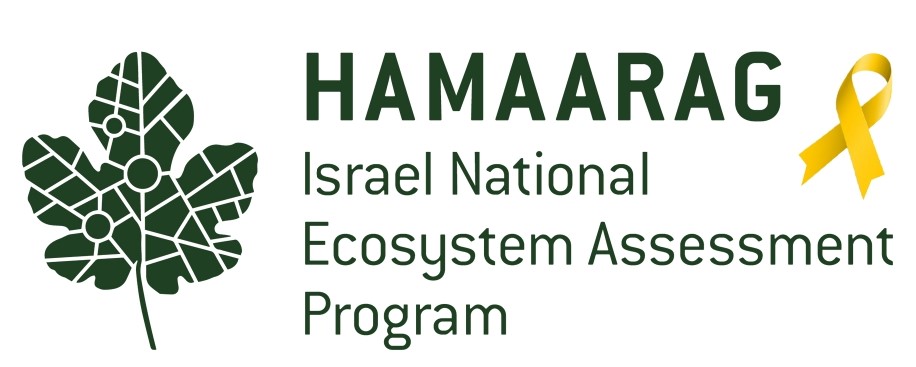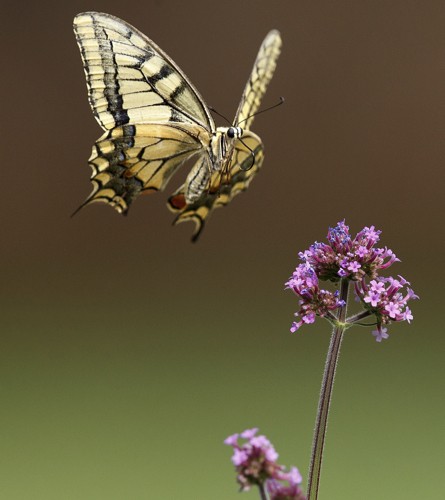In Hammarag, we developed the “Biodiversity Index”, which examines the state of biodiversity in Israel, with the aim of assessing the state of the ecosystems in Israel.
The Biodiversity Index is published as part of the national “Indicators of well-being, sustainability and resilience” report, published by Israel’s Central Bureau of Statistics. These indicators take into account the size of open natural areas, their continuity, and the state of species within them.
For the purpose of calculating of the Biodiversity Index, drawing lessons from the process and promoting the issue, three key bodies have been collaborating since 2015: These are Hamaarag – Israel’s National Ecosystem Assessment Program at the Steinhardt Museum of Natural History, Israel’s Ministry of Environmental Protection, and Israel’s Central Bureau of Statistics. In this way, Israel has joined the leading countries in the OECD, which consistently conduct measurements of the state of their ecosystems as a key indicator to assess their populations’ well-being.
How is the index calculated?
The index compares the current situation each year and a reference state, calculated on the basis of data from the years 2013-2015, and includes a comparison of several factors:
- The size of the natural area – this measurement calculates the reduction in natural habitats – that is, by what percentage did the natural area diminish. The importance of this factor is clear: the smaller the natural area, the smaller the habitat available for various species. Diminishing the size of open natural areas leads to a higher competition for resources, reduces the number of individuals in the existing species, and may even cause the extinction of species.
- Continuity of natural areas – this is measured by the degree of fragmentation of natural open areas and by their degree of exposure to human development. Or, in other words, the extent to which human settlement and infrastructure interrupt the continuity of natural open areas and interfere with it. The continuity of natural open areas is of great importance, since such fragmentation actually implies a decrease in the habitable area. Such fragmentation may prevent mating partners or food from being found. For example, most animals are not able to cross an intercity highway to move from one area to another.
- The state of the species – this index examines changes in the number of species (plants and animals) which are in danger of extinction, the endemic species (unique to Israel), invasive/eruptive species, and human-accompanying species. Invasive species are species which did not previously live in the area, but have arrived there due to human influence, and have managed to establish communities and reproduce there, often at the expense of local species. Known invasive species are the common myna (also known as the Indian myna) and the blue-leafed wattle (Acacia saligna). Another known species is the rose-ringed parakeet, a parrot which was imported to Israel as a pet, released from captivity, and has been thriving for decades in Israeli nature. Eruptive species are species that have lived in the area previously, but human activities have resulted in an increase in their numbers. Examples include the hooded crow and wild boar, which both feed on human waste, and whose numbers are continually increasing.
What does the index say about the state of our nature?
The index is calculated on the basis of this data: If the resulting number is greater than 1, this indicates improvement, but a number less than 1 indicates a deterioration in the state of nature. Unfortunately, the last Biodiversity Index calculated by Hamaarag was 0.96, meaning that the state of nature in relation to the reference period (2013) is declining, a continuation of the deterioration measured two years earlier. This deterioration manifested itself in the removal of 145.2 km2 from natural areas between 2015 and 2019, in a decrease in the continuity of natural open spaces, and in a deterioration in the state of different species.
Dr. Ron Chen, an ecologist at Hamaarag and coordinator of the Biodiversity Index, explained: “The value of the National Biodiversity Index for the year 2020 is 0.960. In comparison, the value for 2018 was 0.983. These values mean that there is a continuous decline in the state of ecosystems in Israel. An examination of the Index’s components reveals that the key factors causing this observed downward trend in the Index are related to direct changes caused by human activity: the reduction and fragmentation of natural open areas, and the increase in the penetration of human influences into such areas. We have not seen a noticeable change in the state of animals and plants in this time-span, but this is not surprising, since the populations’ response may occur later than the gradual decline in the quality and quantity of the natural open space, and may be sharper and less gradual. For as long as this trend of damage to natural open areas continues, so too will the deterioration in the state of animal and plant societies, and this will in time be reflected in a further decrease of the Index.”


